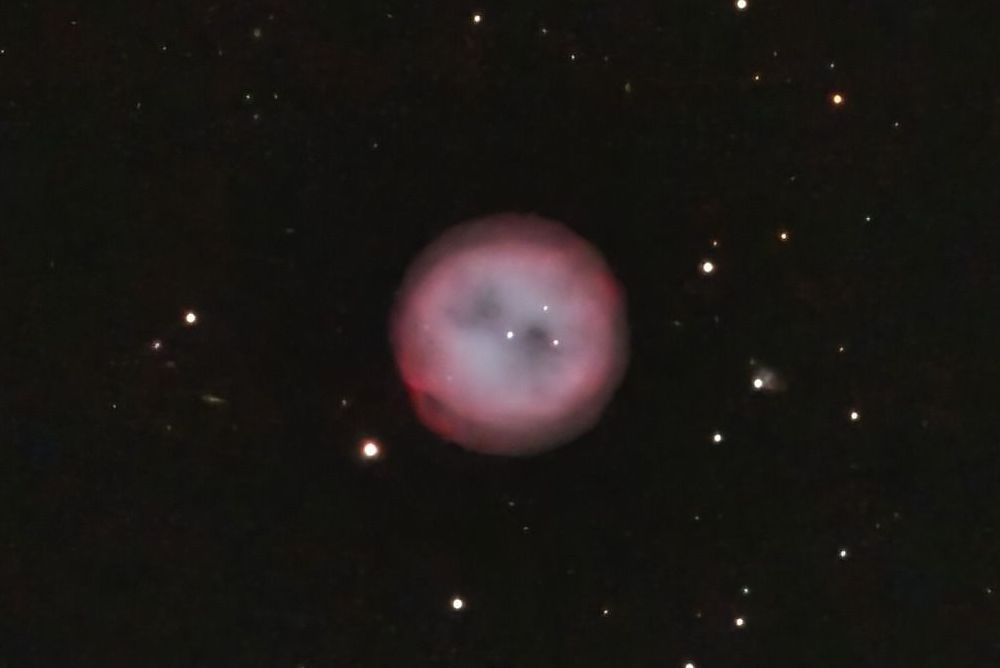Planetary Nebula is a term given to final stage in the life-cycle of intermediate mass stars, typically in the range of 1-8 times the mass of the Sun. Once a star has converted all it's hydrogen in the core to helium, for low mass stars, the core temperature will not be high enough to fuse the remaining helium into heavier elements. As the core then contracts, it heats up until the temperature has increased enough for the surrounding hydrogen just outside the core, to begin fusing into helium. A 'hydrogen burning shell' is formed.
The outer layers of the star then become hotter & expand, forming a Red Giant. As the star continues to expand the gravitational pull on it's outer layer decreases as inverse square (1/R²), until it gets to the point where internal pressure waves or radiation pressure cause the outer shells to be ejected.
The glowing shells of ionized gas, from these dying stars, are called planetary Nebula because of their 'planet-like' (often) round appearance though small telescopes.
The White Dwarf at the centre of these planetary nebula emit large amounts of ultraviolet radiation, which energises (or excites) the gas, causing it to glow brightly in visible wavelengths.

Eskimo Nebula
Some planetary nebula appear to us as ring-like, because from our viewpoint, we look through more of the 'shell' material at the edges than at the centre. Doppler shifts in spectral lines can give information on the rate of expansion, which are typically a few tens of kilometres per second.
Masses of planetary Nebula are of the order of 0.1 Solar Mass, with the White Dwarf seen at the centre of the nebula, retaining much of the original mass of the star.









